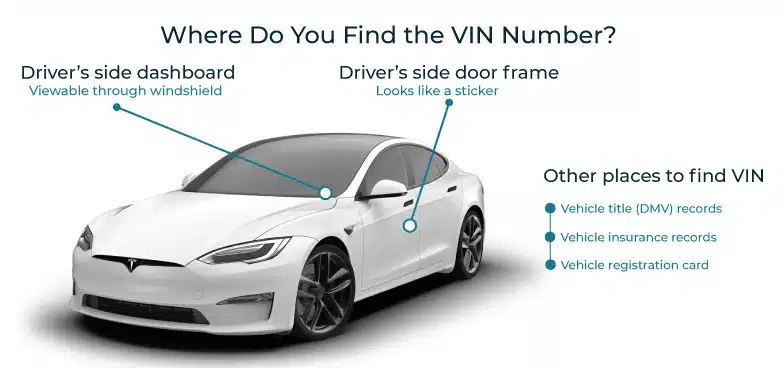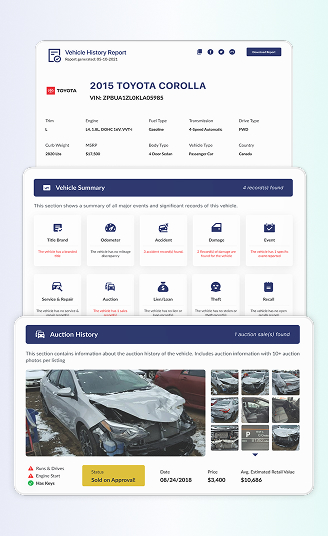
Land Rover Recall Check
Take control with a Land Rover Recall Check. Enter your VIN to uncover open recalls, see fixes, and get clear next steps. So every mile is safer, smarter, and assured. Act now for peace of mind.
What is a Land Rover Recall?
When Land Rover, under NHTSA guidelines,
Why You Should Check the Land Rover Recall History?
You should check the Land Rover recall history, because a small problem can snowball, and free fixes protect value, and also, some defects can raise a real crash or fire risk.
Below are some extra reasons why you should check the recall:
Avoid Unsafe Land Rover
Land Rover recalls happen when a car doesn’t meet safety standards or has defects that could cause harm. From small defects to major safety risks, acting on a Land Rover recall quickly prevents accidents, keeps you safe, and guarantees free repairs.
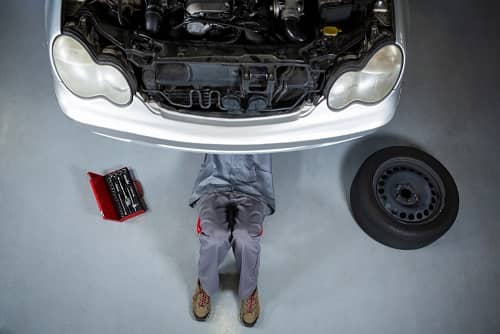
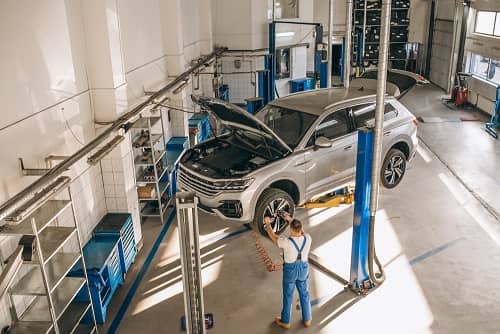
Compliance
Checking a Land Rover’s recall history is essential for safety and compliance. Manufacturers must fix defects for free, so staying proactive helps you avoid legal liability, protect resale value, and prevent insurance complications while keeping you and your passengers safe.
Check Common Safety-Related Issues
Checking your Land Rover recall history is essential for uncovering safety issues like airbag malfunctions from a bad batch, causing them to deploy with excessive force, Hidden defects may not show immediately but can lead to serious danger if ignored. A Land Rover recall check keeps you safe, compliant, and confident every time you drive.

How to Run Land Rover Recalls?
Discovering your Land Rover recall report is just a minute away! Follow these easy steps to get the information you need quickly and effortlessly:

Locate Your Land Rover VIN
You'll need your Vehicle Identification Number (VIN) ready. Find it on the Driver-side windshield (lower corner), driver doorjamb label, or on many models, a plate in the engine compartment near the brake pedal box/bulkhead. Our lookup service works on any type of Land Rover, classic or current.


Fill in the Form
Start your Land Rover recall check now by entering your VIN in the form above. No VIN available? Just enter your license plate number and we’ll generate your recall report instantly.


Receive Your Land Rover Recall Report
Your Land Rover recall report populates swiftly with any open recalls, risks, and dealer remedy guidance.
What is on the Land Rover Recall Check?
In the Detailed Vehicle History, a Land Rover recall check shows detailed information about safety recalls affecting your vehicle. Each record outlines when the recall was announced, which component is impacted, and what action you should take.
Read further to see the detailed breakdown:
- Date of recalls: Indicates when Land Rover and NHTSA issued the recall.
- Affected Component: Each report will specify which Land Rover component is affected, detailing the defect and outlining the repair process required to fix it.
- Consequences: Here, you’ll find the potential risks associated with the defect, such as how it may impact your Land Rover’s performance or safety.
- Next step for the affected Land Rover: Confirm if your Land Rover is listed under the recall and schedule repairs. With a complete Vehicle Report, you’ll also see past recalls and repair status.
A Land Rover vehicle history report also includes accident records, odometer readings, theft records, title check records, and more. Review the records below:

Accident Records
See dates, severity indicators, and reported locations to understand prior damage and how it might affect safety, handling, and future maintenance costs.
Odometer Readings
Verify mileage across services, sales, and inspections to catch rollbacks or data gaps that could signal hidden wear. Or worse, fraud.
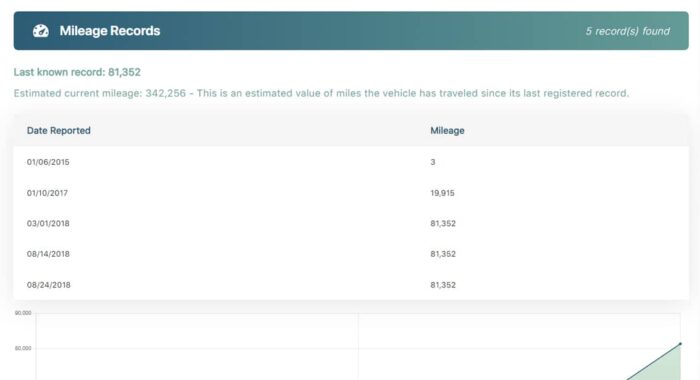

Theft Records
Know if a vehicle was ever reported stolen or recovered, and confirm its status today to prevent legal headaches after you buy or sell.
Title Check Records
Instantly spot salvage, rebuilt, flood, or lemon branding so you avoid disclosure trouble and keep insurance, financing, and resale clean and simple.
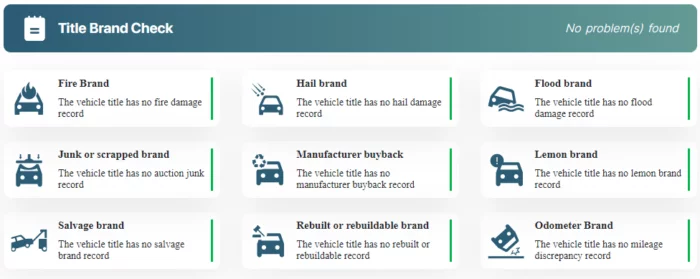

Ownership Records
Track state transfers and durations to gauge care patterns, turnover, and long-term stability before committing.
Auction Information
Review sale dates, condition notes, and available photos that reveal damage history (or missing equipment) you can’t see on a test drive.
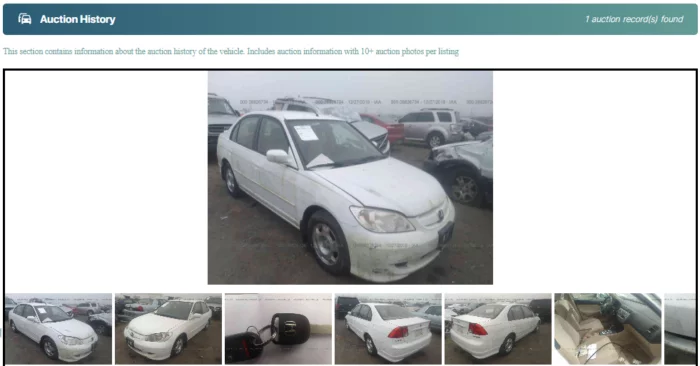
Common Issues Leading to Land Rover Recall
Land Rover vehicles have faced several recalls due to safety and reliability concerns. Common issues include loss of control, fire risk, sudden loss of drive power, and more.
Below are some of the causes behind the Land Rover recall notices.
Loss Of Control
Suspension & Steering
Land Rover’s most urgent recalls center on suspension and steering control. In August 2025, NHTSA campaign 25V514 broadened earlier actions after evidence showed the front upper suspension knuckle on certain 2014–2017 Range Rover and Range Rover Sport vehicles can crack. In a hard swerve or emergency avoidance, the upper arm may detach, and you can suddenly lose handling. A pure danger.
Dealers inspect both knuckles, install a retaining bracket if no crack is found, or replace parts outright, free of charge.
Fire Risk
Engine Oil Leaks In The Engine Bay
Engine-bay oil leaks come next because fire risk is real. Under recall 24V450 (June 2024), some 2023–2024 Defender and 2024 Discovery, Range Rover, Range Rover Sport, and Range Rover Velar used a plastic oil-filter housing that can crack. Oil can spill onto hot components and ignite or drip onto the road and create a skid hazard. The fix is straightforward: dealers replace the housing, filter, and O-rings at no cost, with parts staged to retailers.
Sudden Loss Of Drive Power
Transmission Oil Pressure Drop
A third safety thread is the sudden loss of drive. Under 24V380 (May 2024), certain 2024 Range Rovers and Range Rover Sports can drop into neutral if transmission oil pressure falls due to an internal clutch issue. Losing propulsion without warning can make a routine merge or left turn feel risky. The remedy is that dealers will inspect and, if needed, replace transmission assemblies free.
Rear-Visibility Failures
Rear Camera Water Intrusion
Backup view gone fuzzy? You’re not imagining it. Water intrusion can seep into the rear camera on select Land Rovers and wipe the image when you need it most.
First came 24V-023 on January 17, 2024, for the 2018–2022 Range Rover and Range Rover Sport. Then Range Rover Sport got a stronger, superseding fix under 24V-364, with owner letters in July 2024.
Next, 24V-947 in December 2024 covered the 2022–2023 Range Rover tailgate cameras. Most recently, 25V-645 (late September 2025) targets the 2023 Range Rover Evoque, where water can short the camera and kill the view.
Dealers will inspect for corrosion, reseal the system, and replace the camera if needed. Begin with a Land Rover Recall Check, then schedule the repair and get your rear view back where it belongs.
Touchscreen Blank On Startup
On some Land Rovers, the touchscreen can boot up blank, so the rearview camera never appears. That’s why Land Rover launched NHTSA 25V016 (January 2025) covering the 2023 Discovery Sport, 2023–2024 Defender, and 2023 Range Rover Evoque.
The root cause is a software timing mismatch in the 10-inch display. No screen = no camera image, which violates FMVSS 111 and raises crash risk when backing up. Dealers install an updated software package free of charge (some vehicles may get an over-the-air update).
Occupant Restraint
Seat-Belt Buckle May Not Latch
Occupant restraint problems appear in smaller numbers but deserve attention. In March 2025 (25V155), a subset of 2025 Range Rovers and Range Rover Sports had a second-row center buckle that might not latch properly. An unlatched belt won’t protect in a crash, so buckle hardware and fasteners are replaced at no charge.
Structural Bonding
Body Panels May Be Under-Bonded
A December 2023 action (23V872) addressed under-bonded body panels on some 2024 Range Rover and Range Rover Sport vehicles, because weak bonding can reduce crash protection or damage the fuel system.
Other Notable Issues
Oil Cooler Hose Fasteners
A December 2023 campaign covered oil-cooler hose fasteners on certain 2024 Range Rover models. Loose hardware can leak oil onto the roadway, endangering riders behind you. Lower-probability? Yes. Still worth fixing promptly, and every one of these repairs is free.
Understanding the Land Rover Recall Process
The NHTSA begins the recall process by investigating reported issues. If a defect is found, the manufacturer must issue a recall. See the steps of their process below
Report the Problem
Notice a defect on your Land Rover? Submit a complaint to NHTSA. Each entry is logged and compared across VINs. Multiple similar reports signal a safety defect and may trigger a formal investigation.
Investigation
Once a complaint is submitted, the NHTSA follows a multi-step process to determine whether a recall is necessary.
- Screening: Complaints from vehicle owners are examined for credibility and evidence to decide if further investigation is justified
- Analysis: Defect petitions are reviewed in detail. If denied, the decision and reasoning are publicly posted in the Federal Register.
- Investigate the Issues: When Land Rover’s safety concerns are confirmed, NHTSA launches a formal investigation, ending in either no defect or a recall.
- Recall Management: NHTSA ensures owners are notified and monitors repair completion rates.
Recalls
A safety recall means the manufacturer must inform owners and correct the problem. Recalls happen when a vehicle or component is unsafe or doesn’t meet regulations. Most are voluntary, and manufacturers are required to repair, replace, refund, or buy back the affected vehicle.
How Land Rover Vehicle Recalls Are Handled?
When a safety issue occurs in a Land Rover, three key groups are involved in the recall process: the manufacturer/ automaker, NHTSA, and you, as the vehicle owner. They work together to detect defects, notify drivers, and ensure repairs are completed to keep vehicles safe.
Automaker Role
Land Rover’s recall playbook is straightforward: find the defect, tell regulators, alert owners, fix the cars. Fast and free. Defects surface through testing, warranty data, or NHTSA investigations.
Once a safety issue is confirmed, Land Rover files a Part 573 report with NHTSA, outlining risk, affected models, and the remedy. Dealers get technical instructions and parts, and owners receive first-class mail with what’s wrong and how to book service.
Repairs (hardware or software) cost you nothing, and urgent campaigns may include “Do Not Drive / Park Outside” guidance. Track yours by VIN with a Land Rover Recall Check and schedule the fix.
NHTSA’s Role
NHTSA sets the standards, reviews evidence, and requires Land Rover to file a Part 573 when a safety defect is found. It audits the plan (owner mailings, dealer instructions, parts supply) and tracks completion. The details live online so drivers can act fast. Do a Land Rover Recall Check, schedule the free repair, and keep your paperwork.
Your Role as the Vehicle Owner
Your role is simple and powerful. Start with a Land Rover Recall Check using your VIN. Read the notice you receive by first-class mail; it explains the risk and the free fix. Call your retailer, book a service, and bring the letter with you.
If the notice says “Do Not Drive/Park Outside,” follow it now, not later. After repair, keep the invoice for resale and insurance. If parts aren’t ready, ask the service desk for ETA and recheck your VIN regularly.
Get Land Rover Window Sticker by VIN
Want the complete story? After your Land Rover Recall Check, unlock the Window Sticker by VIN to view factory options, safety tech, packages, emissions details, warranty info, and the original price. It’s a simple upgrade that exposes missing equipment and strengthens your pricing power.
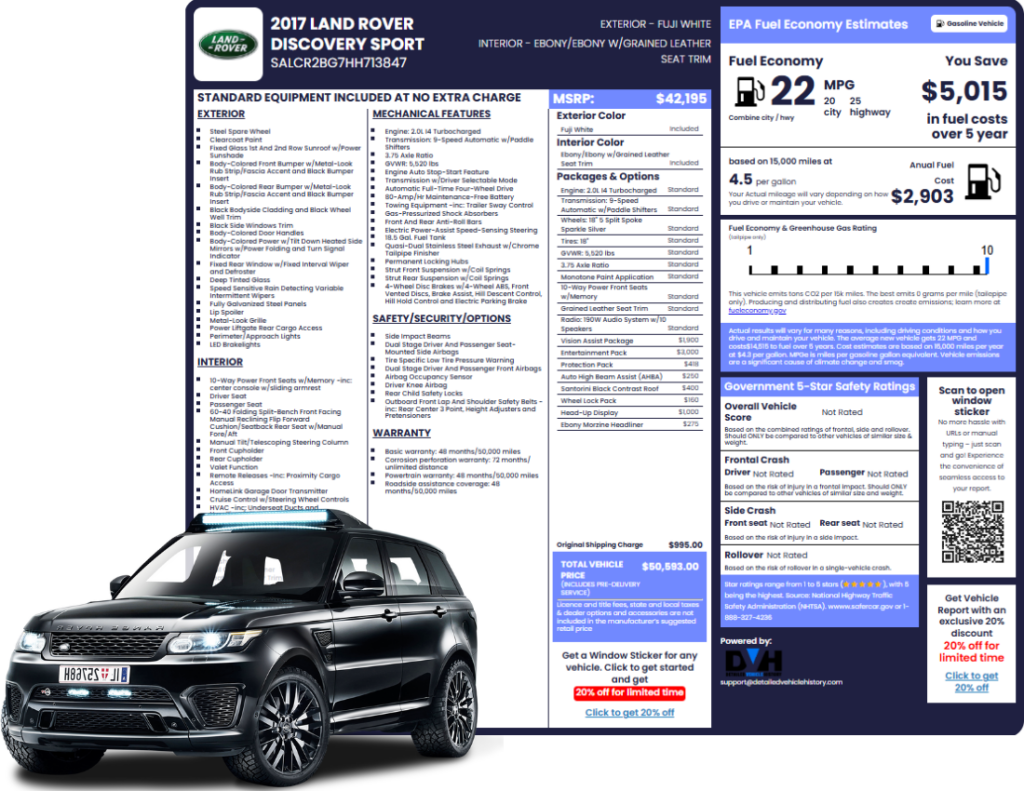
Why Use Detailed Vehicle History to Check Land Rover Recall?
Make every mile a smart one. Our Land Rover Recall Check pairs NHTSA recall data with a deep vehicle history: title and brand checks, prior damage, theft records, odometer rollbacks, auction evidence, and service notes.
No jargon, no hunting across sites, just a single, trustworthy report you can share with buyers or your dealer. Start your VIN lookup now.
Recall Check For Others Manufacturers
FAQ about Land Rover Recalls Check
Are Land Rover recall repairs free?
Yes. Safety recall remedies are free at authorized dealers, regardless of warranty status. (That’s federal law.)
Which Land Rover models have recent recalls?
As of September 2025, the recent recall is the Range Rover (2014–2016) front knuckle cracking (24V-840), and several 2024 models for cracked oil filter housings (24V-450).
Always verify your Land Rover recall status by Land Rover recall check provided by Detailed Vehicle History.
What if I ignore a Land Rover recall?
You’re risking safety and value. Some defects can lead to loss of control or fire. Also, open recalls can spook buyers and insurers. Book the free fix.
How will I be notified regarding the Land Rover recall?
Owner letters are mailed. For example, the knuckle recall was slated for Jan 3, 2025, mailings. You can also check online anytime with your VIN.
Can I keep driving my Land Rover before the repair?
Sometimes yes, sometimes no. Read the notice. If the risk is severe (loss of control or fire), minimize driving and schedule service right away.
Will I be reimbursed if I already paid for the fix?
If your prior repair matches a later recall, reimbursement may be available. Keep receipts and contact Land Rover customer service (noted in recall letters).
Do Land Rover recalls hurt resale value?
Open recalls can. Closed recalls (with proof) usually help, showing responsible ownership. Pair your Land Rover Recall Check with a full report and keep documentation.
What is the lifespan of a Range Rover engine?
With timely maintenance and gentle driving, many see 150k–200k+ miles (240k–320k+ km). Lifespan depends far more on service quality, fluid changes, and repair timeliness than on the badge itself.
What are the most common issues with Land Rovers?
As of September 2025, many owner reports often mention air-suspension components, electrical/infotainment glitches, oil/coolant leaks, door/boot latches, and camera/driver-assist sensors.
Age, climate, and maintenance play a huge role. Preventive service keeps small annoyances from turning into big bills.
At what mileage do Land Rovers start having problems?
There’s no magic number. Many owners report first “age-and-wear” items between 60k–100k miles (96k–160k km), including suspension air springs, batteries, and sensors. Proactive maintenance stretches those intervals.
Is Land Rover using BMW engines? Do Rovers have Honda engines?
Historically, some older Land Rovers used BMW-sourced engines (e.g., certain late-1990s/early-2000s models in some markets). Modern Land Rovers use JLR’s own engines (Ingenium family) and other JLR units. They do not use Honda engines.
Why does Land Rover have such a bad reputation?
Two reasons: complexity (luxury SUVs packed with tech) and ownership costs (repairs/parts can be pricey). Well-maintained trucks with documented histories tend to be far less troublesome than neglected ones.
Why is no one insuring Range Rover?
Premiums can be high due to vehicle value, repair costs, and, in some regions, higher theft rates. That can make some insurers picky. Shop multiple quotes, add tracking/immobilizers, park securely, and verify any insurer’s Land Rover underwriting rules in your area.
Which Range Rover engine should I avoid?
Rather than a blanket “avoid,” focus on condition: cold-start noises, oil consumption, timing-chain rattle, cooling issues, and spotless service records. Research the specific engine code and year, then confirm with a VIN-based history and an inspection.
What is the best year of a Range Rover to buy?
Usually, a mid-cycle refresh or late build year within a generation is safest because early issues are addressed. Still, the individual vehicle’s history matters more than the calendar year.

